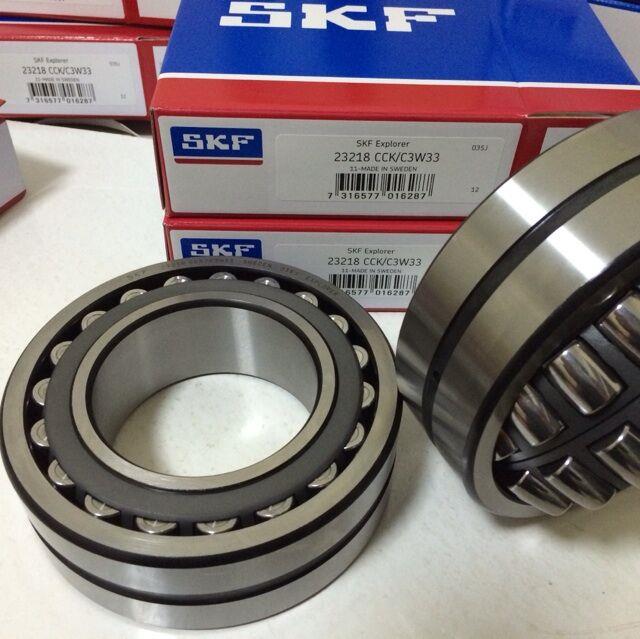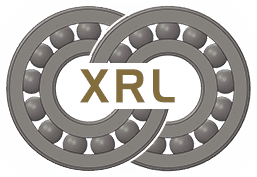Early damage to sliding bearings is much more common than bearing burnout, so it is important to prevent early damage to sliding bearings. Correct maintenance of sliding bearings is an effective way to reduce early damage to bearings and a reliable guarantee to prolong bearing life. Therefore, in the daily maintenance and repair of the engine, attention must be paid to the appearance and shape of the alloy surface, back, end and edge corners of the bearing. Measures to improve the working conditions of the bearing, and pay attention to the prevention of early damage to the sliding bearing.
① Strictly measure the coaxiality and roundness of the main bearing hole of the diesel engine body. For the measurement of the coaxiality of the main bearing hole of the engine body, the coaxiality of the diesel engine body that must be measured is more accurate, and the runout of the crankshaft is measured at the same time, so as to select the thickness of the bearing bush to make the oil lubrication gap consistent in each axis position . Where the diesel engine has been subjected to rolling tiles, flying cars, etc., the coaxiality of the main bearing hole of the body must be tested before assembly. There are also requirements for roundness and cylindricity. If it exceeds the limit, it is prohibited. If it is within the limit, use the grinding method (that is, apply an appropriate amount of red lead powder on the bearing pad, put it into the crankshaft and rotate it, and then remove the bearing cover to check the bearing pad. After the parts are scraped, the change in size is measured to ensure the reliability of use.
② Improve the maintenance and assembly quality of bearings, and strictly control the passing rate of connecting rods. Improve the hinge quality of the bearing, ensure that the back of the bearing is smooth and free of spots, and the positioning bumps are intact; the amount of self-bounce is 0.5-1.5mm, which can ensure that the bearing bush is tightly fitted with the bearing seat hole by its own elasticity after assembly; for new 1. All old connecting rods are required to measure their parallelism and twist, and unqualified connecting rods are prohibited from getting on the car; each end of the upper and lower bearing bushes installed in the bearing seat should be 30-50mm higher than the plane of the bearing seat, higher than The amount can ensure that the bearing and the bearing seat are tightly matched after tightening the bearing cap bolts according to the specified torque, generating sufficient frictional self-locking force, the bearing will not loosen, the heat dissipation effect is good, and the bearing is prevented from ablation and wear; the working surface of the bearing cannot be matched by scraping 75% to 85% of the contact marks should be used as the measurement standard, and the fit clearance between the bearing and the journal should meet the requirements without scraping. In addition, pay attention to check the processing quality of crankshaft journals and bearings during assembly, and strictly implement the repair process specifications to prevent improper installation due to improper installation methods and uneven or non-compliant torque of bearing bolts, resulting in bending deformation and stress Concentration, leading to early damage to the bearing.
Conduct spot checks on purchased new bearing bushes. Focus on measuring the thickness difference of the bearing bush and the size of the free opening, and inspect the surface quality by appearance. After cleaning and testing the old bearings in good condition, the original body, original crankshaft, and original bearings are assembled and used in situ.
Ensure the cleanliness of diesel engine assembly and engine oil. Improve the performance of cleaning equipment, strictly control the quality of cleaning, and improve the cleanliness of various parts of diesel engines. At the same time, the environment of the assembly site was purified and the cylinder liner dust cover was made, which significantly improved the cleanliness of the diesel engine assembly.
③Reasonably select and fill lubricating oil. During use, lubricating oil with low surface tension of the oil film should be selected to reduce the impact of the oil flow when the formed air bubbles collapse, which can effectively prevent bearing cavitation; the viscosity grade of lubricating oil should not be increased at will, so as not to increase the bearing capacity. The coking tendency of the engine; the lubricating oil surface of the engine must be within the standard range, the lubricating oil and refueling tools must be clean to prevent any dirt and water from entering, and at the same time ensure the sealing effect of each part of the engine. Pay attention to regular inspection and replacement of lubricating oil; the place where lubricating oil is filled should be free from pollution and sandstorms to prevent the intrusion of all pollutants; it is forbidden to mix lubricating oils of different qualities, different viscosity grades and different types of use. The precipitation time should generally not be less than 48h.
④ Use and maintain the engine correctly. When installing the bearing, the shaft and the moving surface of the bearing should be coated with clean engine oil of the specified brand. After the engine bearings are reinstalled, turn off the fuel switch before starting for the first time, use the starter to drive the engine to idle for a few times, and then turn on and turn on the fuel switch when the engine oil pressure gauge shows the display, and put the throttle in the middle and low speed position to start the engine. Observe the operation of the engine. The idling time cannot exceed 5 minutes. Do a good job in the running-in operation of the new machine and the engine after overhaul. During the running-in period, it is forbidden to work under the condition of sudden increase and decrease of load and high speed for a long time; It can only be shut down after 15 minutes of low-speed operation under load, otherwise the internal heat will not be dissipated.
Strictly control the starting temperature of the locomotive and increase the oil supply time for starting. In winter, in addition to strictly controlling the starting temperature of the locomotive, the oil supply time should also be increased to ensure that the oil reaches the friction pairs of the diesel engine and minimize the mixed friction of each friction pair when the diesel engine starts. Oil filter replacement. When the pressure difference between the front and back of the oil filter reaches 0.8MPa, it will be replaced. At the same time, in order to ensure the filtering effect of the oil, the oil filter should be replaced regularly to reduce the impurity content in the oil.
Strengthen the cleaning and maintenance of the oil filter and crankcase ventilation device, and replace the filter element in time according to the instructions; ensure the normal operation of the engine cooling system, control the normal temperature of the engine, prevent the radiator from “boiling”, and strictly prohibit driving without cooling water ;Correct selection of fuel, accurate adjustment of gas distribution phase and ignition timing, etc., to prevent abnormal combustion of the engine: timely check and adjust the technical status of the crankshaft and bearings.
Regularly carry out ferrographic analysis of engine oil to reduce accidents. Combined with ferrographic analysis of engine oil, abnormal wear can be detected early. According to the pattern of ferrographic analysis of engine oil, the composition of abrasive grains and possible locations can be accurately determined, so as to prevent problems before they happen and avoid the occurrence of tile burning shaft accident.

Post time: May-30-2023
